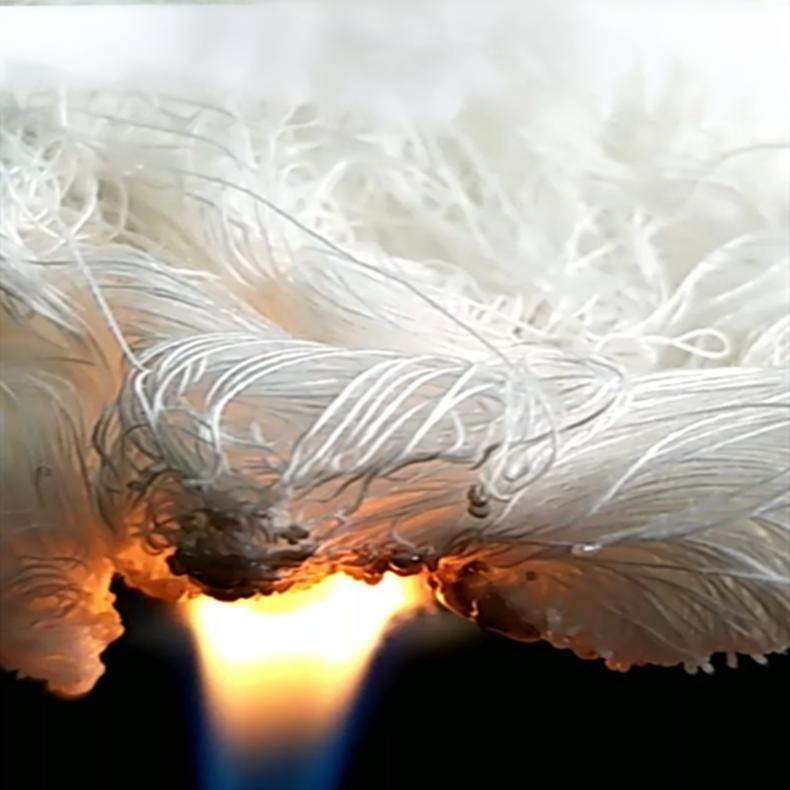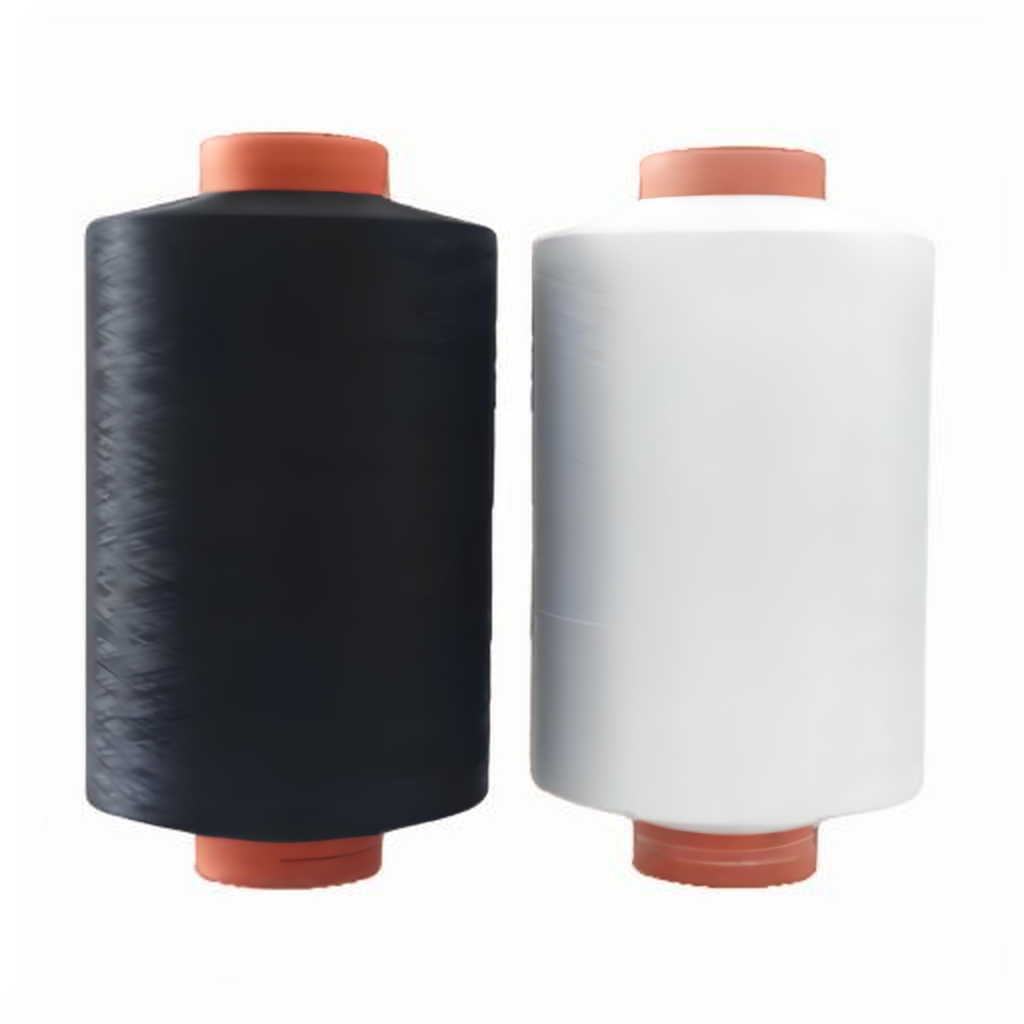
Polyester Yarn Flame Retardant Treatment - Shuanghong - China Yarns Manufacturer And Supplier
Regarding the textile industry’s safety, we at Shuanghong comprehend its importance. As such, it is through our dedication to safety and innovation that we provide high-quality flame-retardant polyester yarns. This paper seeks to understand why we do a flame retardant treatment on our products, how we do it, what our benefits are, how it affects our yarns, and environmental issues.

Fire can cause endless harm to people, so we should prevent it from the source.
What is the Importance of Flame Retardant Treatment?
For example, polyester yarns are used in the manufacture of many things ranging from clothing to industrial textiles. However, their flammability nature can be dangerous, especially in places where there’s a likelihood of fire outbreaks. Our polyester yarns become less flammable when treated with these chemicals; as a result, they can safely be used in wide-ranging areas like public spaces, transport systems and industry among others therefore enhancing safety as well as increasing the application scope of this merchandise.
How Does One Perform Flame Retardant Treatment?

There are various steps involved in enhancing resistance against flames:
Material Preparation: It is important to choose only top-quality polyester raw materials and prepare them for processing purposes.
Pre-treatment: This involves cleaning and treating polyester fibers to ensure their purity(reduce contamination) thereby maintaining good quality of the material before commencing other steps of processing and reducing contamination levels with resins or spin finishes
Application of Flame Retardant: We apply a flame retardant that has been specifically formulated for the yarns. This can be done by dip, coat, or spray methods.
Curing: After treatment, the yarns are cured at high temperatures to ensure that the FR molecules are strongly attached to the fabric.
Winding: Lastly, these treated and cured fibers are wound into spools ready for use.
What Are Our Advantages?
With several unique advantages, Shuanghong has made its name in this industry:
Quality and Safety: Our fire-resistant products meet the highest safety standards; hence safe for use in any environment.
Durability: The flame retardant treatment is durable such that it retains its originality even after going through multiple washings.
Performance: The treatment does not affect yarn strength and feeling guaranteeing consistency of quality and performance in finished products.
Innovation: We continuously invest our resources in R&D to improve our fire-resistant technologies to stay ahead of other competitive firms within this industry.
What Impact Does Flame Retardant Treatment Have on Our Yarns?
This process has many positive effects on our polyester yarns including:
Improved Safety: As a result, they become much less flammable thereby reducing chances of catching fire.
Enhanced Performance: By ensuring that the yarn strength or texture remains untouched, the treatment maintains the quality of the final product.
Wider Application: Our yarns have been improved to enable their use in a wider range of applications including those with stringent safety requirements.
What Is the Environmental Impact of Flame Retardant Treatment?
Shuanghong is committed to minimizing its environmental impacts from our operations. We aim to make our flame retardant treatments as eco-friendly as possible:
Non-Toxic Materials: There is no use of toxic flame retardants during or after the treatment process in making these products harmful.
Sustainable Practices: Our manufacturing processes are designed for minimal wastage and energy reduction.
It is possible to recycle treated yarns, to eliminate them as contributors to environmental waste.
Innovative fire resistance technology at Shuanghong
Polyester yarns have been subjected to several flame retardant treatments. In our quest for safety and environmental sustainability, we have adopted numerous cutting-edge technologies. The following are just some of the most important innovations that distinguish us:
Utilization of Modern Materials
ZIFs (Zeolitic Imidazolate Frameworks): ZIFs are a combination of traditional zeolites and Metal-Organic Frameworks (MOFs). They are derived from transition metals together with imidazole-containing organic ligands which self-assemble into ZIF crystals. Synthesis is simplified in ZIF materials besides being stable with high catalytic activity. These materials can greatly improve the flame-resistance ability of polyester yarns while preserving their mechanical properties.
POSS (Polyhedral Oligomeric Silsesquioxanes): POSS is a special silicon-based flame retardant that has both organic as well as inorganic hybrid structures. Apart from improving fire retardancy, it also enhances the processing and mechanical characteristics of these fibers. As an additive for increasing polyesters’ thermal stability and fire retardancy; these polymers feature unique cage-like or nanostructures composed of POSS.
Graphene (GNS): Graphene and its related forms like graphene oxide (GO) are two-dimensional nanomaterials possessing good flame-retardation ability.
Alkyl phosphate salts are present in the mixture of flame retardants while possessing high thermal stability and good flame retardant effect. They are also considered expensive and may not always provide ideal mechanical properties even when used alone. So, to combine this with other addictive such as nanomaterials or inorganic flame retardants, we have created synergistic systems that include alkyl phosphinate salts. For example, a combination of AlPi and TGIC (tris(glycidyl isocyanurate)) in polyamide 6 (PA6) has been shown to achieve UL-94 V-0 rating with an LOI (Limiting Oxygen Index) of 30.3% when the total addition is 11% and the ratio of AlPi to TGIC is 97:3.
Ammonium Polyphosphate (APP), Aluminum Hypophosphite (AHP), and Melamine Cyanurate (MCA): We also employ APP, AHP, and MCA as a synergistic system for PP. This means that its effectiveness increases if more than one agents are used together instead of using them single-handedly. With ratios m(APP):m(AHP):m(MCA) = 4:1:1, total addition equals 30%. The LOI obtained from this combination was around 33% and a UL-94 V-0 rating was observed.
Macromolecular Flame Retardants
DOPO-PCP (6-[4-(N-Phenylamino-DOPO-Methylene)Phenoxy]Cyclotriphosphazene): This is a novel inorganic-organic hybrid macromolecular flame retardant prepared using chemical reactions. It contains high contents of flame retardant elements and has good compatibility with high molecular weight materials. DOPO-PCP has been used successfully to flame retard DGEBA (diglycidyl ether of bisphenol A).
HAPN (Hybrid Aromatic Phosphorus Nitrogen): It is a type of new macromolecular intumescent flame-retardant that can quench free radicals. Its combination with APP allows improved fire resistance properties to be achieved in polypropylene (PP).
Environmental Considerations
Non-Toxic and Eco-Friendly Materials: Shuanghong uses only non-toxic flame retardants that do not emit toxic fumes during processing or the life cycle of the product, making them safe for both users and the environment.
Sustainable Practices: Our manufacturing processes are designed in such a way as to minimize waste generation as well as reduce energy consumption. We make sure that treated yarns are recyclable thereby reducing their environmental impact even more.
Impact on Yarn Performance
Improved Safety: The introduction of fire-resistant chemicals through this treatment has significantly reduced flammability levels hence making them suitable for different applications including those whose safety regulations are very strict.
Enhanced Performance: However, this does not affect the strength or hand feel of the yarns thereby maintaining high quality and performance in the final product.
Wider Application: Our treated yarns can be used in a broader range of applications, including public spaces, transportation, and industrial settings, due to improved safety and performance.
Shuanghong Company’s innovative flame retardant technologies are a testament to our commitment to safety, quality, and environmental responsibility. We make sure that our polyester yarns remain not only flame retardant but also maintain their mechanical and performance properties through the application of advanced materials as well as synergistic systems. Further, our emphasis on eco-friendly resources and sustainable procedures cements our leadership in the market.
Comparison between traditional flame retardants and environmentally friendly flame retardants
Traditional flame retardants, especially halogen flame retardants, are highly efficient and require low dosage in flame retardant treatments, but they pose significant environmental and safety issues. During combustion, a large amount of toxic and corrosive gases, such as hydrogen halides, are released, which not only pollute the environment but also pose a potential threat to human health. In addition, traditional flame retardants produce a large amount of smoke when burning, which aggravates the hazards of fire, has a great impact on the mechanical properties of the material, and has poor thermal stability. Although its initial cost is low, in the long run, the costs brought about by environmental governance and health issues are high, and it is restricted by regulations in many countries, making market access difficult.
In contrast, environmentally friendly flame retardants show significant advantages in many aspects. During the flame retardant treatment process, the environmentally friendly flame retardant is non-toxic and harmless, and does not produce harmful gases when burned, which meets environmental protection requirements. They are low in smoke and toxicity, safer when burned, and suitable for fields with high safety requirements such as electronic appliances.
Environmentally friendly flame retardants have little effect on the mechanical properties of materials and good thermal stability while maintaining good flame retardant effects. Although the initial cost is high, the long-term use cost is low, and the product value and competitiveness are high. Environmentally friendly flame retardants have a wide range of applications, covering multiple industries such as construction, electronics, and automobiles. They comply with strict environmental regulations and are easier to obtain market access and certification.
in conclusion
In summary, environmentally friendly flame retardants are superior to traditional flame retardants in terms of environmental protection, safety, performance and economy. Especially in modern society, where environmental protection and sustainable development are of great concern, environmentally friendly flame retardants are widely used. The application prospects are broad. By adopting advanced environmentally friendly flame retardant technology, Shuanghong Company has not only improved the safety and performance of its products, but also established a good environmental image in the industry.
Feature Product
-
 DTY 100D/144F Polyester Yarn
DTY 100D/144F Polyester YarnDTY 100D/144F Polyester Yarn: The Ultimate Guid...
-
 DTY 100D/96F Polyester Yarn
DTY 100D/96F Polyester YarnDTY 100D/96F Polyester Yarn: The Soft, Stable S...
-
 DTY 75D/144F SIM Polyester Yarn
DTY 75D/144F SIM Polyester YarnDTY 75D/144F SIM Polyester Yarn: A Top Choice f...

